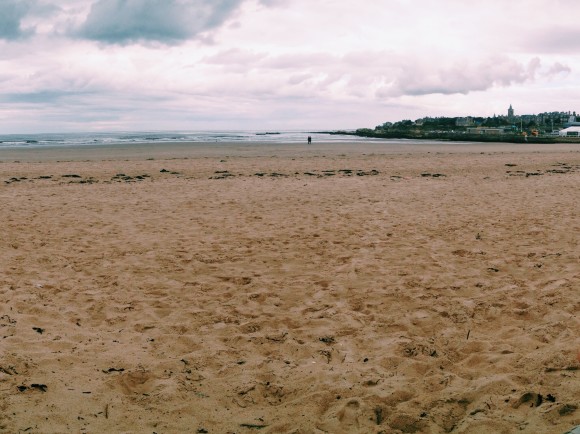After the insanity of Freshers’ Week, life at St Andrews has begun to settle into a more predictable rhythm. Classes, or modules as they’re called here, began two weeks ago, leaving me with a clearer picture of the United States’ and Great Britain’s varying academic cultures.
The main difference between academics at the two schools is that St Andrews focuses on in-depth study in a few subjects, while the College of William and Mary offers breadth in many subjects. Last semester I took six classes in fields as varied as cultural anthropology and calculus. Here, I’m taking three modules with a narrower, more arts-based focus: medieval and Renaissance texts, Renaissance art in Italy and Northern Europe and the foundations of human social life.
Modules are broken down into two types of classes: lectures and tutorials. Lectures are similar to introductory classes at the College, as they consist of lecturers (the equivalent of professors) speaking to a group of several hundred students for about an hour. There is little time for questions or additional student/lecturer interaction. Unlike American courses, one professor does not teach the whole module. Instead, a group of about five lecturers rotate teaching throughout the semester. Lectures form the bulk of my class time, as I have lectures three days a week for English and art history and four days a week for social anthropology.
The other element of modules is tutorials, which are held once a week. Tutorials are small classes of about nine students led by a tutor (typically a Ph. D. student or one of the module lecturers). During tutorials, students discuss the information learned in lectures, make presentations and reflect on assigned readings.
Given the fact that I have a lighter course load here, I generally spend less time in class. This can be problematic, especially this past week when a bout of freshers’ flu made me want to do nothing but sleep and watch Netflix. Once I recover, though, I hope to use my free time to catch up on my many assigned readings.
As opposed to professors at the College giving students a syllabus with clearly designated readings for each class meeting, readings at St Andrews are less delineated. Tutors assign set readings or assignments each week, but modules also have long additional reading lists that students are expected to study in their free time. My social anthropology module, for example, has a list of about six books or articles designated as suggested readings for each lecture.
The general academic culture at St Andrews encourages independence far more than the College. No one will force students to do all of their lecture readings, and since these readings aren’t discussed during tutorials, some students choose not to do them. My current plan of action is to do all of my tutorial readings and some of my lecture readings, as I know they’ll help boost my scores on the few assessments that make up my module grades.
Unlike courses at the College, which count participation, midterms, papers and finals as elements of overall grades, my module grades are made up of one or two essays and a final. This means that the pressure to do well on every assignment is greater here, but there are also far fewer assignments as a whole.
I’ve only had classes for two weeks, so I’m not yet sure whether I prefer the British or American style of teaching. It’s been interesting to see the different approaches to the content I’m learning and to teaching. For example, a professor at the College would likely read a student’s essay draft and provide feedback before final submission. This week, I overheard a student in my art history tutorial ask our tutor if she could send her an essay draft, to which the tutor responded somewhat incredulously, “No, the idea is to write the paper on your own.”
Lecturers and tutors are less accessible here, which falls in line with the theory of encouraging academic independence. One friend who is studying abroad this semester told her lecturer that she anticipated struggling with the course and asked to meet in person. She was told the lecturer was too busy and most study abroad students have difficulty handling that particular course.
In terms of content, I’ve found the most differences in English and social anthropology. The first part of my English module consists of Old English translations, which are definitely not the same as the literary analysis I grew used to at the College. Anthropology, which was my favorite subject last year, is also different here because I’m now studying British social anthropology rather than American cultural anthropology. As my lecturer recently explained, social anthropology focuses on the relationship between individuals and society, whereas cultural anthropology focuses on individuals’ interaction with culture. There is certainly a mismatch, then, between what I learned in my introductory anthropology course and what my current classmates learned in their year one anthropology module, but hopefully this won’t be a problem once our first essay rolls around.
Overall, I’d say that academics here are a welcome change from the U.S. I never really spoke during classes at the College, as I’m a naturally shy person, but I’ve found it easy to speak during tutorials because the groups are so much smaller. It’s also nice having less time in class; I only have an hour of classes on Wednesday and Friday. On these days, it’s easy to walk down to West Sands — the beach across the street from my hall — and spend a few hours relaxing with friends.


